|
Books Should Be Free Loyal Books Free Public Domain Audiobooks & eBook Downloads |
|
|
Books Should Be Free Loyal Books Free Public Domain Audiobooks & eBook Downloads |
|
Nature Books |
|---|
|
Book type:
Sort by:
View by:
|
By: James Oliver Curwood (1878-1927) | |
|---|---|
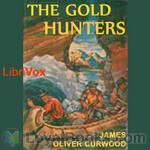 The Gold Hunters
The Gold Hunters
In The Gold Hunters we find 3 men in search of a treasure of gold hidden away in the upper reaches of the Canadian wilderness. One, a young white man, another his half breed friend, and the third the wise old Indian sage who communes with the wilderness as only his people have done through the generations. The 3 men know the gold is there, they had found the map which is leading them to it. Yet it seems that the map is leading them to places that don't exist, and each day finds a new adventure and new dangers which they must overcome if they are to achieve their reward. (Introduction by Roger Melin) | |
 Baree, Son of Kazan
Baree, Son of Kazan
| |
By: James Orton (1830-1877) | |
|---|---|
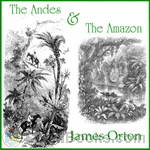 The Andes and the Amazon
The Andes and the Amazon
This book, with the subtitle "Across the Continent of South America" describes the scientific expedion of 1867 to the equatorial Andes and the Amazon. The route was from Guayaquil to Quito, over the Cordillera, through the forest to Napo, and, finally, on the Rio Napo to Pebas on the Maranon. Besides this record, the expedition - under the auspices of the Smithsonian Institute - collected samples of rocks and plants, and numerous specimen of animals. The scientists also compiled a vocabulary of local languages and produced a new map of equatorial America... | |
By: Jane Andrews (1833-1887) | |
|---|---|
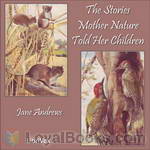 The Stories Mother Nature Told Her Children
The Stories Mother Nature Told Her Children
“You may think that Mother Nature, like the famous “old woman who lived in the shoe,” has so many children that she doesn’t know what to do. But you will know better when you become acquainted with her, and learn how strong she is, and how active; how she can really be in fifty places at once, taking care of a sick tree, or a baby flower just born; and, at the same time, building underground palaces, guiding the steps of little travellers setting out on long journeys, and sweeping, dusting, and arranging her great house,–the earth... | |
By: Jim Kjelgaard (1910-1959) | |
|---|---|
 The Black Fawn
The Black Fawn
Bud Sloan was an orphan who had been 'sold out' of the orphanage to work on a farm once he'd been old enough to labor. The farm where he was to work was owned by an aging farmer and his wife who had raised a large family and were now left alone. One day, after his chores were done, Bud wandered into the woods nearby and with mouth agape, he noticed a newborn jet black fawn all alone and apparently confused in his new surroundings. Bud resolved that day that this baby fawn was just like himself, an orphan, and would be bound to him in spirit... | |
By: Johann David Wyss (1743-1818) | |
|---|---|
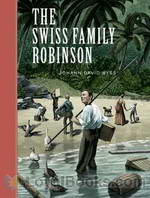 The Swiss Family Robinson
The Swiss Family Robinson
A beautiful story about survival, the Robinson family shows that one does not have to have the usual comforts of life in order to be comfortable and happy. It is also a story about family relations. The book showcases a family of six that has to start all over without the basic amenities that make life easier in the eyes of society. The idea of being in an island with no human neighbors is daunting to say the least. The family was shipwrecked and everyone else on the ship perished when they deserted the ship... | |
By: John Edward Mercer (1857-1922) | |
|---|---|
 Nature Mysticism
Nature Mysticism
| |
By: John Muir (1838-1914) | |
|---|---|
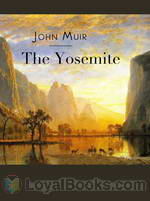 The Yosemite
The Yosemite
Anyone who's ever visited the Yosemite National Park will find this book a treasure trove of descriptions, information and evocations of the fabled beauty of this amazing piece of heaven on earth! The Yosemite by John Muir was published in 1912. Born in Scotland, England, this world-famous conservationist was a multi-talented genius. He was a geologist, naturalist, engineer, writer, botanist and a passionate and prolific writer on the preservation of the natural environment. His family migrated to America when he was just a few years old, the third of eight boisterous children... | |
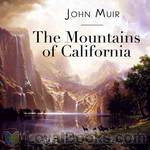 The Mountains of California
The Mountains of California
First published in 1894, this wonderful travelogue by a famed naturalist and conservationist still remains a book that delights and informs its readers. The Mountains of California by John Muir recounts the author's exploration of the Yosemite Valley, Mount Whitney, the famed sequoia forests and King's Canyon among other places of immense natural beauty. Written in his characteristic zestful style, with a deep understanding and respect for nature, the book is a treasure trove of geography, geology, botany, biology and sheer love of the magical planet we live in... | |
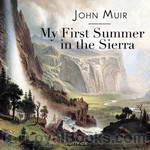 My First Summer in the Sierra
My First Summer in the Sierra
The journal of nature-lover John Muir who spent the summer of 1869 walking California’s Sierra Nevada range. From French Bar to Mono Lake and the Yosemite Valley, Muir was awestruck by everything he saw. The antics of the smallest “insect people” amazed him as much as stunted thousand-year old Juniper trees growing with inconceivable tenacity from tiny cracks in the stone. Muir spent the rest of his life working to preserve the high Sierra, believing that “the clearest way into the Universe is through a forest wilderness.” John Muir (1838-1914) was born in Dunbar, Scotland and grew up in Wisconsin, USA. This recording commemorates the 140th anniversary of that first summer. | |
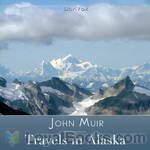 Travels in Alaska
Travels in Alaska
In 1879 John Muir went to Alaska for the first time. Its stupendous living glaciers aroused his unbounded interest, for they enabled him to verify his theories of glacial action. Again and again he returned to this continental laboratory of landscapes. The greatest of the tide-water glaciers appropriately commemorates his name. Upon this book of Alaska travels, all but finished before his unforeseen departure, John Muir expended the last months of his life. | |
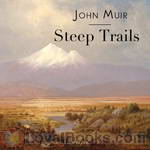 Steep Trails
Steep Trails
A collection of Muir's previously unpublished essays, released shortly after his death. "This volume will meet, in every way, the high expectations of Muir's readers. The recital of his experiences during a stormy night on the summit of Mount Shasta will take rank among the most thrilling of his records of adventure. His observations on the dead towns of Nevada, and on the Indians gathering their harvest of pine nuts, recall a phase of Western life that has left few traces in American literature... | |
 Letters to a Friend, Written to Mrs. Ezra S. Carr, 1866-1879
Letters to a Friend, Written to Mrs. Ezra S. Carr, 1866-1879
When John Muir was a student in the University of Wisconsin he was a frequent caller at the house of Dr. Ezra S. Carr. The kindness shown him there, and especially the sympathy which Mrs. Carr, as a botanist and a lover of nature, felt in the young man's interests and aims, led to the formation of a lasting friendship. He regarded Mrs. Carr, indeed, as his "spiritual mother," and his letters to her in later years are the outpourings of a sensitive spirit to one who he felt thoroughly understood and sympathized with him... | |
By: John Ruskin (1819-1900) | |
|---|---|
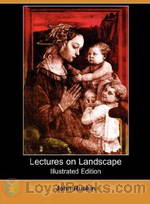 Lectures on Landscape
Lectures on Landscape
A series of lectures on landscape painting delivered at Oxford in 1871, by artist, critic, and social commentator, John Ruskin. | |
By: John Wesley Powell (1834-1902) | |
|---|---|
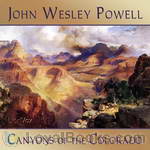 Canyons of the Colorado, or The exploration of the Colorado River and its Canyons
Canyons of the Colorado, or The exploration of the Colorado River and its Canyons
John Wesley Powell was a pioneer American explorer, ethnologist, and geologist in the 19th Century. In 1869 he set out to explore the Colorado and the Grand Canyon. He gathered nine men, four boats and food for ten months and set out from Green River, Wyoming, on May 24. Passing through dangerous rapids, the group passed down the Green River to its confluence with the Colorado River (then also known as the Grand River upriver from the junction), near present-day Moab, Utah. The expedition’s route... | |
By: John Woodhouse Audubon (1812-1862) | |
|---|---|
 Audubon's Western Journal: 1849-1850
Audubon's Western Journal: 1849-1850
John Woodhouse Audubon , son of the famous painter John James Audubon and an artist in his own right, joined Col. Henry Webb's California Company expedition in 1849. From New Orleans the expedition sailed to the Rio Grande; it headed west overland through northern Mexico and through Arizona to San Diego, California. Cholera and outlaws decimated the group. Many of them turned back, including the leader. Audubon assumed command of those remaining and they pushed on to California, although he was forced to abandon his paints and canvases in the desert…... | |
By: Joseph Rogers (1821-1889) | |
|---|---|
 Reminiscences Of A Workhouse Medical Officer
Reminiscences Of A Workhouse Medical Officer
Joseph Rogers was an English physician, medical officer, and health care reformer in London. The system of poor-law dispensaries and separate sick wards, with proper staffs of medical attendants and nurses, was due to the efforts of Rogers and his colleagues. His memoir, published in 1889, contains an informative biography written by his brother. His career was not without conflict as his zeal sometimes offended governing boards. - Summary by David Wales | |
By: Katharine Elizabeth Dopp (1863-1944) | |
|---|---|
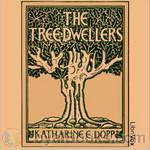 The Tree-Dwellers
The Tree-Dwellers
Katharine E. Dopp was well-known as a teacher and writer of children’s textbooks at the turn of the 20th Century. She was among the first educators to encourage the incorporation of physical and practical activity into the elementary school curriculum at a time when such activities were becoming less commonplace in a child’s home environment. The Tree-Dwellers – The Age of Fear is the first in a series of elementary school texts written by Ms. Dopp that focus on the anthropological development of early human groups... | |
By: L. Frank Baum (1856-1919) | |
|---|---|
 Policeman Bluejay
Policeman Bluejay
This is another "TWINKLE TALE" from Mr. Baum (written under the pen name Laura Bancroft) and celebrates the further adventures of Twinkle and Chubbins as they magically become child-larks and live the exciting, and often dangerous, life of birds in the forest. | |
By: L. L. Langstroth (1810-1895) | |
|---|---|
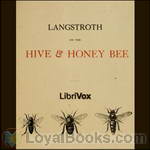 Langstroth on the Hive and the Honey-Bee
Langstroth on the Hive and the Honey-Bee
Langstroth revolutionized the beekeeping industry by using bee space in his top opened hive. In the summer of 1851 he found that, by leaving an even, approximately bee-sized space between the top of the frames holding the honeycomb and the flat coverboard lying above, he was able to quite easily remove the latter, which was normally well cemented to the frames with propolis making separation hard to achieve. Later he had the idea to use this discovery to make the frames themselves easily removable... | |
By: Marian Storm (1857-1926) | |
|---|---|
 Minstrel Weather
Minstrel Weather
A series of poetically written meditations on the seasons and other nature subjects. Or “ …Minstrel Weather, a series of open-air vignettes which circle the zodiac with the attentive eye of a naturalist and the enchanted ardor of a poet.” - Summary by Christopher Morley, Modern Essays, 1921, and David Wales | |
By: Mark Twain (1835-1910) | |
|---|---|
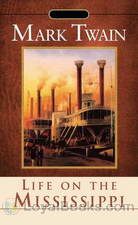 Life on the Mississippi
Life on the Mississippi
A river memoir documenting Twain’s early days as an apprentice steamboat pilot on the Mississippi River before the American Civil War. Reminiscing about his happy experiences as a young man under the instruction of an experienced mentor, the autobiographical tale depicts one of the most vivid illustrations of river life. Furthermore, the book captures the author’s nostalgic emotions through his resonant depiction of one of the most notable periods of his life. Twain begins his memoir with a rich historical account of the Mississippi River including its exploration by early explorers, its evolution, and its vastness... | |
By: Mary Decker Wellcome | |
|---|---|
 Talks About Flowers
Talks About Flowers
To all Flower Lovers who may read these pages, we come with kindly greetings. To you we dedicate our Work. Encouraged by the many testimonials of favor with which our Flower Sketches have been received, which have appeared in the Boston Journal, Portland Transcript, and the leading Floricultural journals, we were induced to prepare this volume,..As it is, we are sure that we have given you a great amount of valuable information, and just such as amateurs need, respecting the habits and requirements of those flowers which are best adapted for general cultivation, and in a form specially new and attractive, combining the history and literature of flowers, with description and mode of culture... | |
By: Mary Hunter Austin (1868-1934) | |
|---|---|
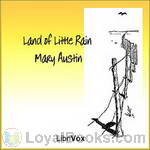 The Land of Little Rain
The Land of Little Rain
The Land of Little Rain is a book of sketches which portray the high desert country of southern California, where the Sierras descend into the Mojave Desert. Mary Austin finds beauty in the harsh landscape: "This is the sense of the desert hills--that there is room enough and time enough. . . The treeless spaces uncramp the soul." Her story begins with the water trails that lead toward the few life giving springs--the way marked for men by ancient Indian pictographs. Life and death play out at these springs... | |
By: May Kellogg Sullivan | |
|---|---|
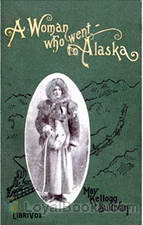 A Woman Who Went to Alaska
A Woman Who Went to Alaska
Alaska has only been a state since 1959, and the breathtaking terrain remains mostly unspoiled and natural. In modern times, many of us have had the pleasure of visiting Alaska via a luxurious cruise ship, where we enjoyed gourmet meals, amazing entertainment, and a climate-controlled environment. It's easy to also book a land package that enables you to see more of the country by train.Imagine what it was like to visit the same wild, untamed countryside in 1899. Instead of boarding a sleek, stylish cruise ship, you travel for weeks on a steamer... | |
By: Michael Faraday (1791-1867) | |
|---|---|
 The Chemical History of a Candle
The Chemical History of a Candle
The Chemical History of a Candle is a series of 6 lectures on chemistry presented to a juvenile audience in 1848. Taught by Michael Faraday - a chemist and physist, and regarded as the best experimentalist in the history of science - it is probably the most famous of the Christmas Lectures of the Royal Society. Taking the everyday burning of a candle as a starting point, Faraday spans the arc from combustion and its products, via the components of water and air (oxygen, hydrogen, nitrogen, carbon), back to the type of combustion that happens in the human body when we breathe... | |
By: Mohandas Karamchand Gandhi (1869-1948) | |
|---|---|
 Guide to Health
Guide to Health
Mahatma Gandhi, known today as a fascinating political leader and pacifist, also considered himself "something of an authority on matters of Health and Disease as well. Very few of us perhaps are aware that he is the author of quite an original little Health-book in Gujarati. [...] His views are of course radically different from the ordinary views that find expression in the pages of such books; in many cases, indeed, his doctrines must be pronounced revolutionary, and will doubtless be regarded by a certain class of readers as wholly impracticable... | |
By: Mrs. Isabella Beeton (1836-1865) | |
|---|---|
 The Book of Household Management
The Book of Household Management
“Mrs. Beeton’s” is a guide to all aspects of running a household in Victorian Britain. Published in 1861, it was an immediate bestseller, running to millions of copies within just a few years. In the cookery sections, Mrs. Beeton follows the animal “from his birth to his appearance on the table.” Learn how to care for poultry during moulting season, how to wean calves, how to cure hams, salt cod, carve mutton, and much more. | |
By: Ontario. Ministry of Education | |
|---|---|
 Ontario Teachers' Manuals: Nature Study
Ontario Teachers' Manuals: Nature Study
| |
By: P. R. Kincaid | |
|---|---|
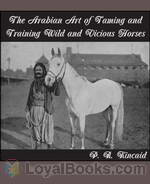 The Arabian Art of Taming and Training Wild and Vicious Horses
The Arabian Art of Taming and Training Wild and Vicious Horses
Back in the day before automobiles, a good horse trainer and veterinarian was the equivalent of “Mr Goodwrench”. A badly behaving or unhealthy equine was equivalent to breaking down on the highway or running out of gas on a lonely stretch of highway somewhere in Utah. My sources tell me that most of the training methods are ok, but stay away from the medical tips unless you are prepared to become the poster boy or girl for the local SPCA. Listen with tongue in cheek, and check with a professional before attempting any of these techniques on a real animal. | |
By: Paolo Mantegazza (1831-1910) | |
|---|---|
 Book of Love
Book of Love
Translated from Italian, it delves into the physiology of love from a scientific standpoint, in beautiful writing. | |
By: Ralph Waldo Emerson | |
|---|---|
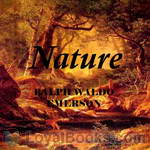 Nature
Nature
“Nature” is a short essay by Ralph Waldo Emerson published anonymously in 1836. It is in this essay that the foundation of transcendentalism is put forth, a belief system that espouses a non-traditional appreciation of nature. Recent advances in zoology, botany, and geology confirmed Emerson’s intuitions about the intricate relationships of nature at large. The publication of “Nature” is usually taken to be the watershed moment at which transcendentalism became a major cultural movement... | |